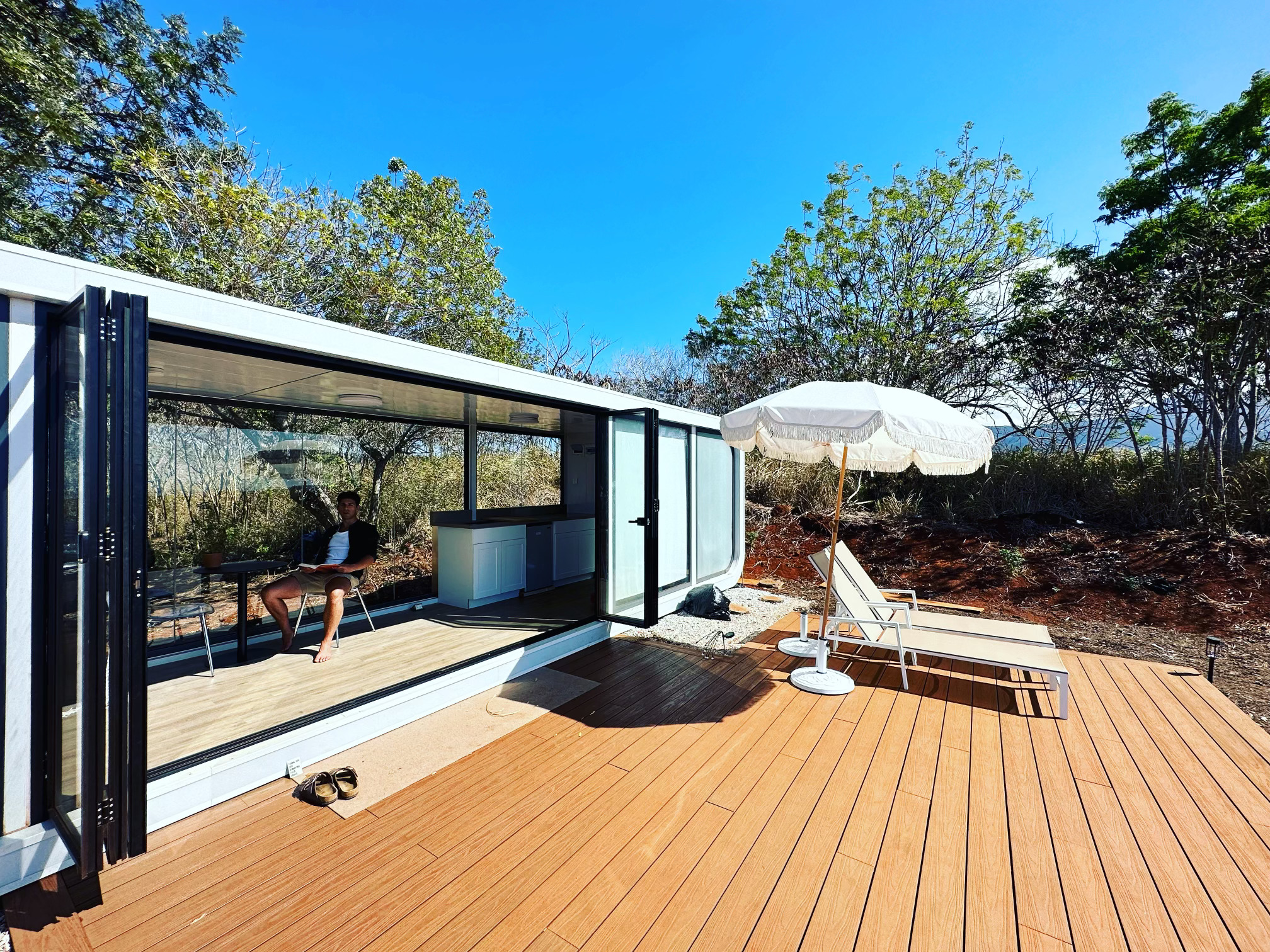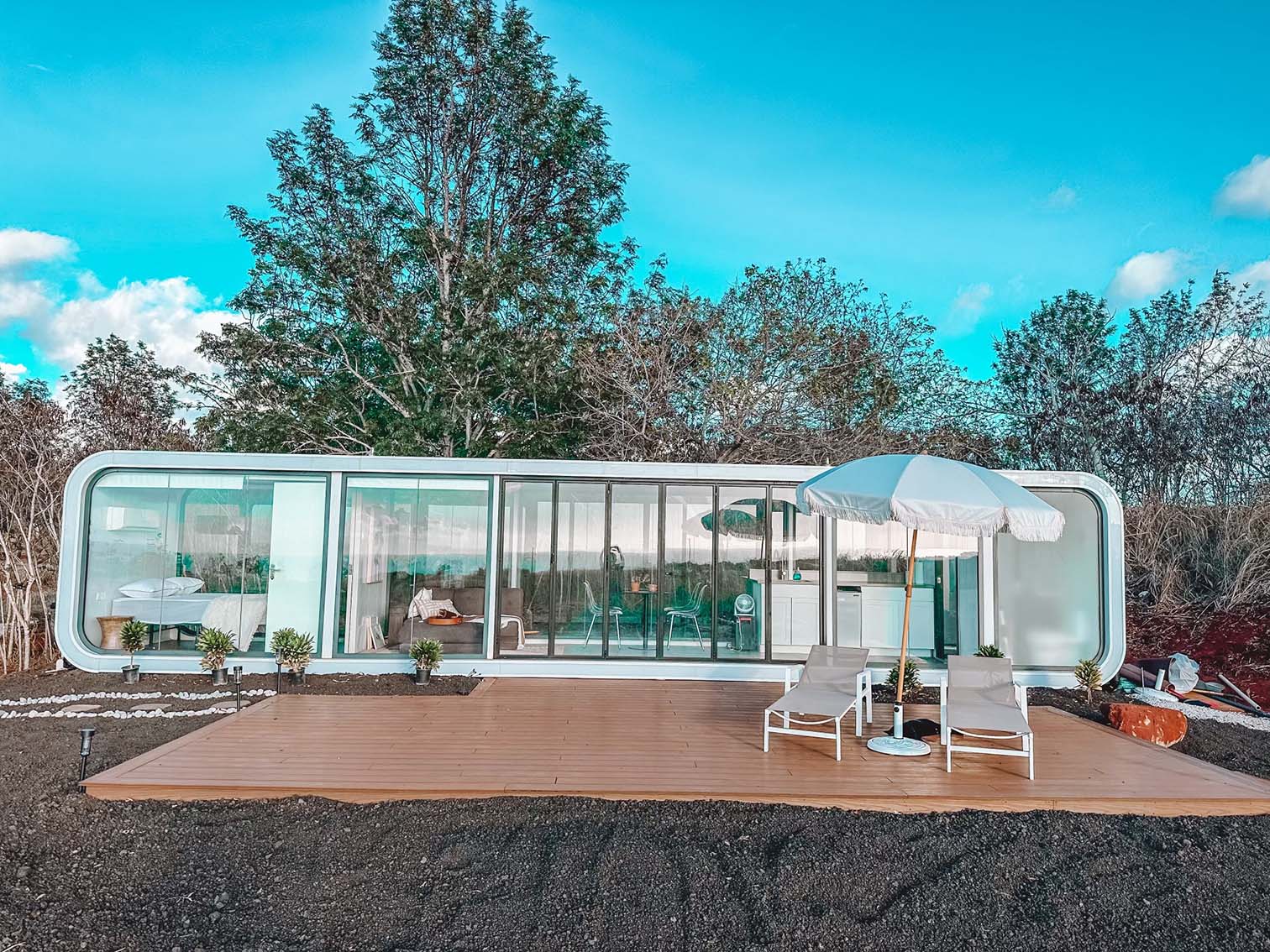The dream of owning a home is a significant milestone for many individuals and families. As the housing industry continues to evolve, pre-built homes, also known as pre-fabricated or modular homes, have emerged as a compelling alternative to traditional construction methods.
In this blog post, we will explore the advantages of pre-built homes and shed light on why they have gained popularity in recent years. From accelerated construction timelines to cost-efficiency, customization options, and environmental sustainability, pre-built homes offer a range of benefits that deserve consideration.
What Are Pre-Built Homes?
Pre-built homes, often referred to as prefabricated or modular homes, represent a modern approach to housing that deviates from traditional construction techniques. To grasp their advantages fully, it's essential to understand what sets them apart:
1. Definition of Pre-Built Homes:
Pre-built homes are residential structures that are primarily manufactured in controlled factory environments, as opposed to being built entirely on-site. They are constructed in sections or modules, each of which is designed and fabricated with precision before being transported to the final building site for assembly. This approach streamlines the construction process and offers several notable pros of pre-built houses.
2. Off-Site Construction:
One key distinction between pre-built homes and traditional construction lies in the location of the building process. With pre-built homes, the majority of construction activities occur off-site in a factory or manufacturing facility. This controlled environment allows for greater efficiency and quality control.
3. Assembly on Location:
After the modules or sections are manufactured, they are transported to the building site. On-site, these modules are expertly assembled, connected, and finished to create the final dwelling. This process is often quicker and more efficient than building a house entirely from scratch at the construction site.
4. Materials and Standards:
Pre-built homes adhere to strict quality standards and are constructed using durable, high-quality materials. The manufacturing process ensures that each component meets precise specifications, reducing the risk of errors and material waste.
5. Customization and Design:
Pre-built homes are not limited in design or customization options. Homebuyers can choose from a wide range of floor plans, architectural styles, and interior finishes to create a personalized living space that suits their preferences and needs.
6. Regulatory Compliance:
Pre-built homes comply with building codes and regulations in the region where they are installed. They undergo rigorous inspections during manufacturing to ensure compliance with safety and structural requirements.
4 Major Advantages of Pre-Built Homes
The housing industry is undergoing a remarkable transformation, and at the forefront of this change are pre-built homes, also known as pre-fabricated or modular homes. These innovative structures are redefining the way we approach homeownership, offering major benefits of factory-built homes that challenge the status of traditional construction methods. Here are the reasons why pre-built homes have captured the attention of prospective homeowners and builders alike.
1. Speed of Construction:
One of the most striking advantages of pre-built homes is the remarkable speed at which they can be constructed. This accelerated timeline is made possible by a departure from traditional on-site construction methods.
Here's a closer look at why pre-built homes are the epitome of efficiency:
- Streamlined Manufacturing Process: Pre-built homes are manufactured in controlled factory environments, where each component is meticulously crafted with precision. Unlike traditional construction, which can be hampered by unpredictable weather conditions and on-site delays, pre-built homes take advantage of an assembly line approach.
- Simultaneous Work: In traditional construction, tasks are often completed sequentially. In contrast, pre-built homes allow simultaneous work on different modules or sections. This parallel processing means that while one module is being prepared, another can be assembled, dramatically reducing construction timelines.
- Reduced On-Site Work: With most construction occurring off-site, on-site work primarily involves assembly and finishing touches. This means less disruption for neighboring properties and a quicker path to homeownership.
2. Cost Efficiency:
Beyond their speed, pre-built homes offer significant cost-efficiency advantages compared to traditional construction methods. Let's explore how choosing a pre-built home can be a financially sound decision:
- Reduced Labor Costs: Traditional construction often requires a large and varied workforce, driving up labor costs. In contrast, pre-built homes are assembled with fewer workers, as much of the construction occurs off-site. This reduction in labor hours translates into substantial savings.
- Material Efficiency: Pre-built homes are designed with careful consideration of material use. Precise measurements and planning in the factory minimize material waste, contributing to cost savings and environmental sustainability.
- Predictable Costs: Pre-built home's cost is more predictable as compared to traditional construction, where unexpected delays or issues can lead to budget overruns. With pre-built homes, homeowners can plan their finances with greater certainty and can enjoy quick home construction.
3. Customization Options:
One common misconception is there are no customization options in modular homes. In reality, pre-built homes offer a wide array of customization options, allowing homeowners to design a residence that aligns perfectly with their vision and lifestyle.
- Design Flexibility: Pre-built homes come with an impressive range of design options, from architectural styles to floor plans. Homebuyers can choose layouts that suit their needs, whether it's an open-concept living space, a cozy cottage, or a modern, minimalist design.
- Interior and Exterior Finishes: The customization extends to interior and exterior finishes. Homeowners can select from various fixtures, finishes, and materials to create a personalized living space.
- Add-Ons and Upgrades: Pre-built homes often offer add-ons and upgrades, such as additional rooms, upgraded appliances, or smart home features. These options allow homeowners to tailor their homes to their preferences.
4. Energy Efficiency and Sustainable Construction Methods:
Environmental consciousness is a growing concern, and pre-built homes align with sustainability principles. They offer several eco-friendly features that benefit both homeowners and the planet:
- Energy Efficiency: Pre-built homes are designed with energy efficiency in mind. They often incorporate features like high-quality insulation, energy-efficient windows, and heating and cooling systems that reduce energy consumption and lower utility bills.
- Reduced Waste: The manufacturing process of pre-built homes is highly efficient, resulting in minimal material waste. This reduced waste not only contributes to cost savings but also reduces the environmental impact of construction.
- Eco-Friendly Materials: Many pre-built homes utilize eco-friendly and sustainable materials, further reducing their carbon footprint. These materials are not only durable but also contribute to the overall sustainability of the home.
- Energy-Saving Features: Pre-built homes often come equipped with energy-saving features like LED lighting, programmable thermostats, and ENERGY STAR-rated appliances, enhancing their environmental friendliness.
Quick Comparison: Modular homes vs. Traditional Construction
| Aspect | Pre-built / Modular Homes | Traditional Construction |
|---|---|---|
| Off-Site Manufacturing | Controlled factory environment | In-factory precision |
| Modular Assembly | Quick assembly on-site | On-site artistry |
| Workforce Size | Smaller workforce focused on assembly | Larger, varied workforce |
| Materials | Efficient use, less waste | Potential material waste |
| Labor Efficiency | Concentrated, cost-effective | Varied, potentially costly |
| Timeframes | Shorter due to off-site work | Longer on-site process |
| Upfront Costs | Lower due to reduced labour costs | Higher upfront labour costs, potential delays |
| Long-Term Savings | Quicker move-in, energy efficiency | Longer temporary housing costs, variable energy efficiency |
| Hidden Expenses | Potential transportation and site prep costs | Unforeseen delays and setbacks |
Overcoming Misconceptions About Pre-Manufactured Homes
When it comes to pre-built homes, misconceptions often cloud the picture, casting doubts on their quality, customization options, and long-term durability. Some sceptics worry that the manufacturing process might compromise the quality of these homes. There's a prevailing notion that pre-built homes come in limited, cookie-cutter designs, stifling individuality. Additionally, concerns about their structural integrity over time often surface.
However, let's bring clarity to these matters.
Quality is a priority in the world of pre-built homes, with rigorous quality control measures in place during manufacturing. Precision engineering and meticulous attention to detail ensure that these homes consistently meet or even exceed industry standards for quality and safety.
Contrary to the misconception, pre-built homes offer a vast range of customization possibilities, from floor plans to finishes and architectural styles. This allows buyers to craft their homes into unique, personalized spaces.
Furthermore, when it comes to durability and structural integrity, pre-fabricated homes are designed with resilience in mind. They're engineered to withstand the challenges of transportation and assembly, often exhibiting structural integrity equal to or superior to traditionally constructed homes.
Sustainability and Environmental Impact
Sustainability and the environmental impact of pre-built homes are increasingly evident, perfectly aligning with the contemporary housing trends centred on eco-conscious living. In terms of environmental benefits, the controlled manufacturing environment of pre-built homes plays a pivotal role in reducing material waste, making the construction process inherently more sustainable.
Furthermore, pre-built homes often integrate energy-efficient features, including top-notch insulation, efficient HVAC systems, and energy-saving appliances. These elements collectively lead to reduced energy consumption and fewer greenhouse gas emissions, demonstrating their positive environmental impact.
Additionally, many pre-manufactured homes prioritize the use of sustainable and eco-friendly materials, further diminishing their overall environmental footprint. This commitment to sustainable building practices echoes the growing importance of environmental responsibility in construction.
In light of modern housing trends, the demand for sustainable and energy-efficient pre-fab homes is on a steady ascent. Pre-built homes not only meet these expectations but frequently surpass them, positioning themselves as a progressive choice for individuals seeking to minimize their environmental impact. These homes not only promise a greener tomorrow but also offer a sustainable and forward-thinking approach to modern living.
Conclusion
The advantages of pre-built homes over traditional construction are not just a glimpse into the future; they are the future. NanoNest's unwavering commitment to offering sustainable, modern living solutions is a testament to a new way of living that's better for you and the environment.
Imagine a life where your dream home is not a distant goal but a reality waiting to embrace you. We offer precisely a path to a simpler, more sustainable, and exceptionally comfortable life. Whether you're a young professional looking for your first eco-friendly space or a family seeking the perfect blend of convenience and sustainability, NanoNest has a solution tailored to your needs.
Don't wait for tomorrow when you can start your journey today. Contact us and discover the endless possibilities that await you. Your ideal living space is just a click or a call away. Take the leap towards a brighter, more sustainable future with NanoNest, where your dream home is more than just a structure; it's a lifestyle waiting to be lived.


